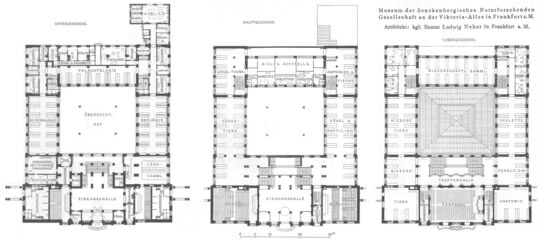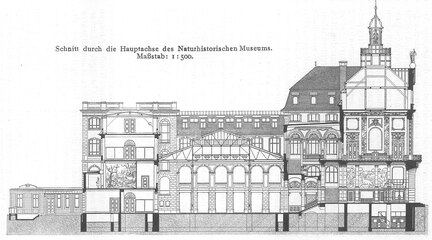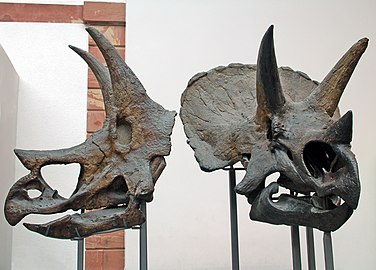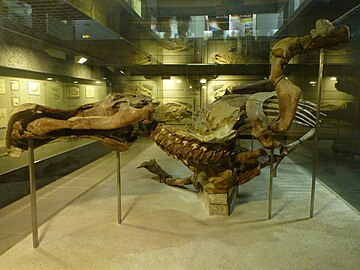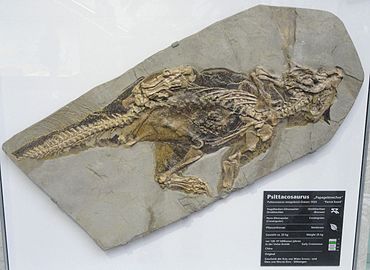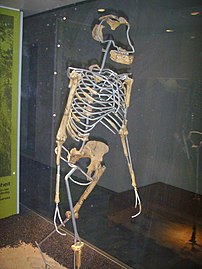
Philipp Jakob Cretzschmar was a German physician and natural scientist.

Leptictidium is an extinct genus of small mammals that were likely bipedal. Comprising eight species, they resembled today's bilbies, bandicoots, and elephant shrews, and occupied a similar niche. They are especially interesting for their combination of characteristics typical of primitive eutherians with highly specialized adaptations, such as powerful hind legs and a long tail which aided in locomotion. They were omnivorous, their diet a combination of insects, lizards, frogs, and small mammals. Leptictidium and other leptictids are not placentals, but are non-placental eutherians, although they are closely related to placental eutherians. They appeared in the Lower Eocene, a time of warm temperatures and high humidity, roughly fifty million years ago. Although they were widespread throughout Europe, they became extinct around thirty-five million years ago with no descendants, as they were adapted to live in forest ecosystems and were unable to adapt to the open plains of the Oligocene.
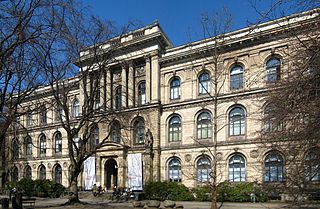
The Natural History Museum is a natural history museum located in Berlin, Germany. It exhibits a vast range of specimens from various segments of natural history and in such domain it is one of three major museums in Germany alongside Naturmuseum Senckenberg in Frankfurt and Museum Koenig in Bonn.

The Messel pit is a disused quarry near the village of Messel about 35 km (22 mi) southeast of Frankfurt am Main, Germany. Bituminous shale was mined there. Because of its abundance of well-preserved fossils of the Messel Formation dating from the middle of the Eocene, it has significant geological and scientific importance. Over 1000 species of plants and animals have been found at the site. After almost becoming a landfill, strong local resistance eventually stopped these plans and the Messel pit was declared a UNESCO World Heritage Site on 9 December 1995. Significant scientific discoveries about the early evolution of mammals and birds are still being made at the Messel pit, and the site has increasingly become a tourist site as well.

Museumsufer is the name of a landscape of museums in Frankfurt, Hesse, Germany, lined up on both banks of the river Main or in close vicinity. The centre is the historic art museum Städel. The other museums were added, partly by transforming historic villas, partly by building new museums, in the 1980s by cultural politician Hilmar Hoffmann. The exhibition hall Portikus was opened on an island at the Alte Brücke in 2006.
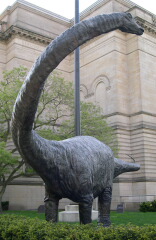
Dippy is a public sculpture of Dippy, or Diplodocus carnegii, on the grounds of the Carnegie Institute and Library complex in the Oakland neighborhood of Pittsburgh, Pennsylvania.

Wilhelm Kobelt was a German zoologist born in Alsfeld, Grand Duchy of Hesse. He specialized in the field of malacology.

Carl Friedrich Roewer was a German arachnologist. He concentrated on harvestmen, where he described almost a third (2,260) of today's known species, but also almost 700 taxa of spiders and numerous Solifugae.

The Museum of Natural History in Görlitz, Germany is a natural history museum with focus on zoology, botany and geology. Since 2009, the museum has been part of the Senckenberg Gesellschaft für Naturforschung with headquarters in Frankfurt/Main. The main field of research is soil biology. In the years 2006 to 2017 the number of visitors was between 25,000 and 34,000, in the year of the 3rd Saxon State Exhibition 2011 it was even 47,000.
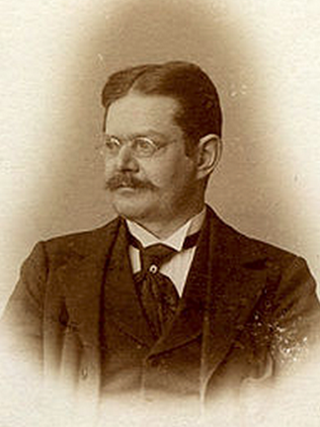
Gustav Tornier was a German zoologist and herpetologist.

Friedrich Karl Wilhelm Dönitz or Doenitz was a German physician, anatomist, zoologist, and entomologist. He described numerous species of insects, ticks and worked for thirteen years in Japan where he was a professor of anatomy while also serving as the first forensic physician there.

Johann Christian Senckenberg was a German physician, naturalist and collector. In 1763, he established the Senckenberg Foundation to support natural sciences. This founded the Botanischer Garten der Johann Wolfgang Goethe-Universitat Frankfurt am Main. His name is honoured in the Senckenberg Gesellschaft für Naturforschung which he endowed, Frankfurt University Library, and Naturmuseum Senckenberg.

The Frankfurt University Library is the library for the Goethe University Frankfurt, Germany.
Ferdinand Richters was a German zoologist. Richters was the curator of Crustacea at the Naturmuseum Senckenberg from 1878 until his death in 1914.

Archiv für Molluskenkunde is a peer-reviewed scientific journal published by the Senckenberg Nature Research Society, covering research in malacology.
The Senckenberg Nature Research Society is a German scholarly society with headquarters in Frankfurt am Main.
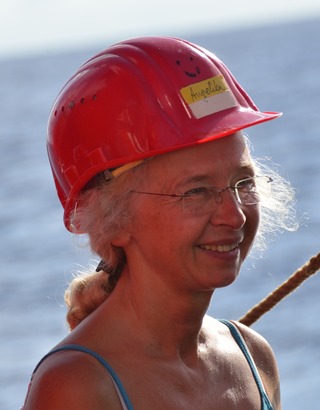
Angelika Brandt is the world leader in Antarctic deep-sea biodiversity and has developed, organised and led several oceanographic expeditions to Antarctica, notably the series of ANDEEP cruises, which have contributed significantly to Antarctica and deep-sea biology. Brandt was the senior scientist of ANDEEP which was devoted entirely to benthic research in the Antarctic abyss.

The Edmontosaurus mummy SMF R 4036 is an exceptionally well-preserved dinosaur fossil in the collection of the Naturmuseum Senckenberg (SM) in Frankfurt am Main, Germany. Found in 1910 in Wyoming, United States, it is ascribed to the species Edmontosaurus annectens, a member of the Hadrosauridae. The fossil comprises a nearly complete skeleton that was found wrapped in impressions of its skin, a rare case of exceptional preservation for which the term "dinosaur mummy" has been used. Notably, the horny beak is preserved with this specimen. Plant remains found within the thorax cavity had been interpreted as stomach contents, although later research questioned this identification. The mummy's hands are wrapped in skin impression, which was interpreted as evidence for interdigital webbing and an aquatic lifestyle in hadrosaurids; this hypothesis, although universally accepted once, is now widely refused. SMF R 4036 is one of the four best preserved hadrosaurid mummies, and was the second to be discovered. The find was made by fossil hunter Charles Hazelius Sternberg and his sons, who sold their numerous finds to various museums in North America and Europe. Only two years earlier the Sternbergs had discovered the Edmontosaurus mummy AMNH 5060 in the same region, which is now on display at the American Museum of Natural History (AMNH) in New York City.
Jens Lorenz Franzen was a German paleontologist. He was the head of Paleoanthropology and Quaternary at Naturmuseum Senckenberg in Frankfurt and participated in fossil excavation in Germany. He worked with scientific excavations and discovered many previously unknown fossil mammal species.


